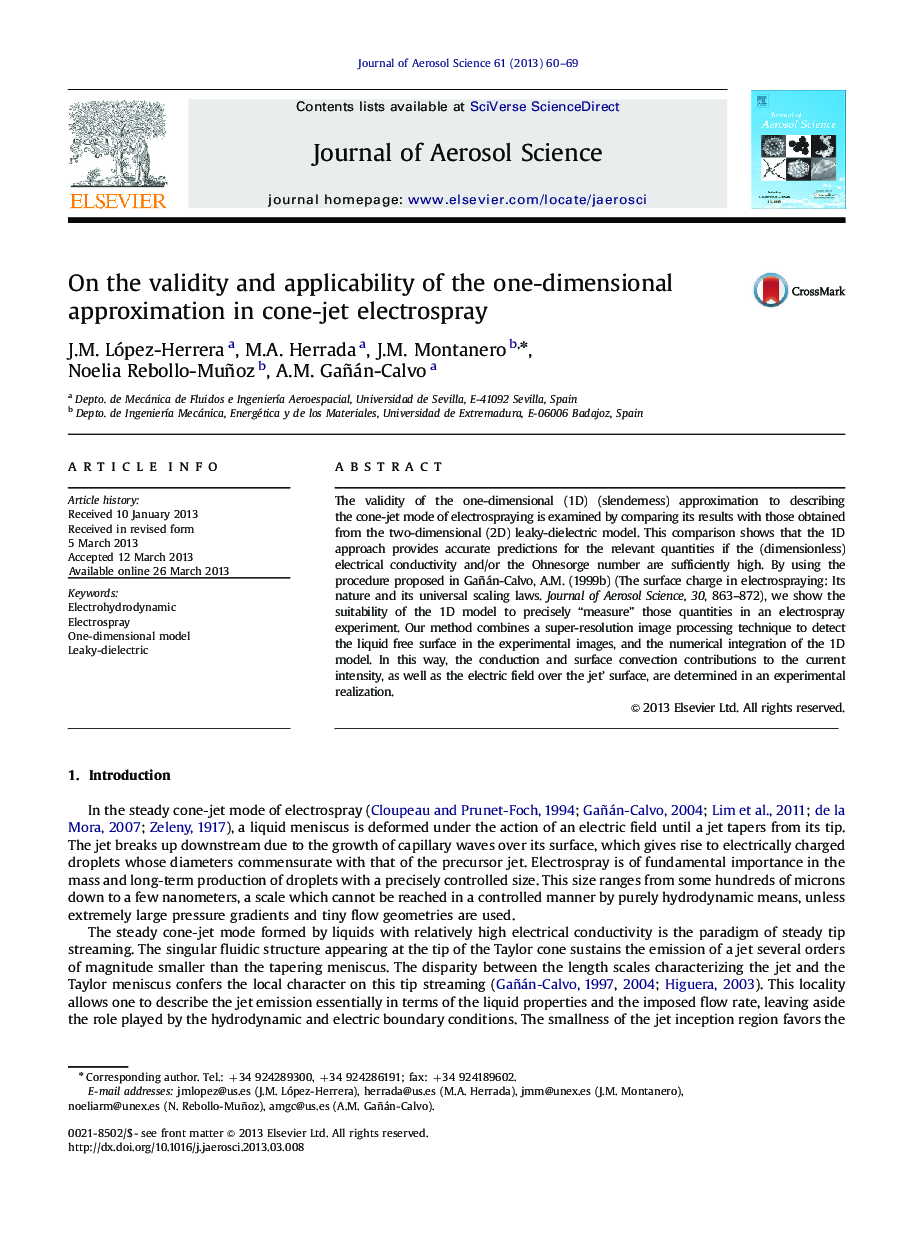| Article ID | Journal | Published Year | Pages | File Type |
|---|---|---|---|---|
| 4452481 | Journal of Aerosol Science | 2013 | 10 Pages |
•We analyze the validity of the 1D approximation to describing the cone-jet mode of electrospray.•We compare the 1D results with those obtained from the 2D leaky-dielectric model.•The 1D approach is accurate for high enough conductivities and/or Ohnesorge numbers.•The 1D model is used to precisely measure the relevant quantities in an experiment.•The method combines a super-resolution image processing technique and the 1D approach.
The validity of the one-dimensional (1D) (slenderness) approximation to describing the cone-jet mode of electrospraying is examined by comparing its results with those obtained from the two-dimensional (2D) leaky-dielectric model. This comparison shows that the 1D approach provides accurate predictions for the relevant quantities if the (dimensionless) electrical conductivity and/or the Ohnesorge number are sufficiently high. By using the procedure proposed in Gañán-Calvo, A.M. (1999b) (The surface charge in electrospraying: Its nature and its universal scaling laws. Journal of Aerosol Science, 30, 863–872), we show the suitability of the 1D model to precisely “measure” those quantities in an electrospray experiment. Our method combines a super-resolution image processing technique to detect the liquid free surface in the experimental images, and the numerical integration of the 1D model. In this way, the conduction and surface convection contributions to the current intensity, as well as the electric field over the jet’ surface, are determined in an experimental realization.
